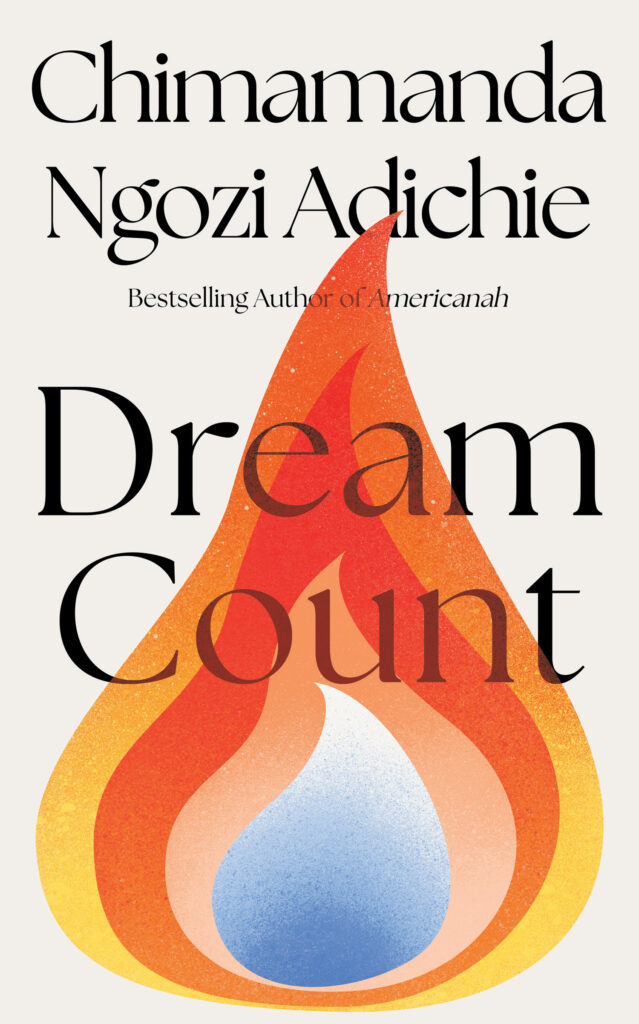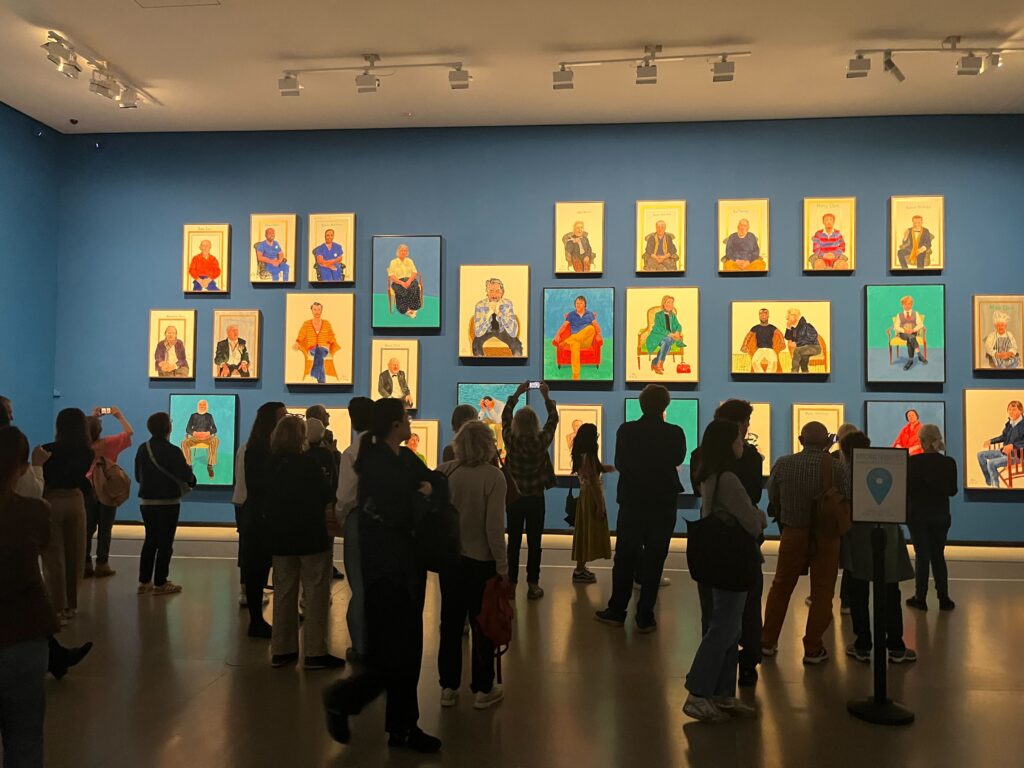One of the best things about the Internet? The seemingly endless amount of options for everything. One of the worst things about the Internet? Navigating all of that to find something truly worthwhile.
Lazies’ List is our team’s response to that, part monthly round-up of recommendations and part digital diary for fellow lazies in the market for a well-curated but authentic selection of cultural picks, comforts and joys. In a digital world dominated by algorithms and influencers, our monthly series is an honest reflection of the reads that stuck with us, the films and series we binged, the songs and podcasts always playing in our earbuds, the events that made us text ‘’You just had to be there’’ in our group chats and the indulgences that got us through the month.
As we look back on May, here is what we loved, learned from and wholeheartedly recommend.
READ
Zsofi: Dream Count by Chimamanda Ngozi Adichie

I vividly remember taking Americanah out from Durham University’s student library almost a decade ago. It was one of the first books I ever borrowed from there. Educated thus far in Central-Eastern Europe, I was blissfully unaware of the Western artsy young person’s literary canon – and oh what a joy it was to devour all the Bret Easton Ellises, Donna Tartts, Rooneys, Baldwins, Zadie Smiths, Rachel Cusks and more. Americanah was a memorable part of this cultural re-education, this wonderful time when I fell in love with English literature.
Fast forward to 2025, I was delighted to come across Chimamanda Ngozi Adichi’s brand new work, Dream Count on a rainy afternoon in Shakespeare and Company (yes, cringe, but I still like to go there and read on the much quieter second floor). An immediate purchase it was, and reimmersion into Adichie’s fluid, yet detail-oriented prose.
Dream Count follows the intertwined lives of four Nigerian women living in modern-day America – three friends in their late thirties and one of their housekeepers, who is raising her daughter alone in the US. It’s a dreamy, but also cautionary tale about women’s quest to become “whole” through attaining romantic love, of reconciling patriarchal tradition with modernity, of complex and multi-layered ideals of belonging, and last but not least: of the lessons one pays for being true to themselves.
I’m only halfway in, but I can safely say that it’s one of the most enjoyable, powerful reads of the year for me. If you’re looking for that kind of impossible-to-put-down, somewhat Rooney-esque reading experience, this one’s definitely for you.
Eve: Jill Mapes’ essay for Hearing Things on The Arcade Fire Problem
Former editor of Pitchfork and Vulture, and founder of the worker-owned music site Hearing Things, Jill Mapes brings over 15 years of deep, insightful experience exploring the intersection of music and culture. In her latest essay, Mapes turns her attention to indie rock giants Arcade Fire, reflecting on how their anthemic mid-00s sound and enigmatic stage presence, which struck a chord with the restless spirit of a generation, may have been disingenuous all along.
After a meteoric rise marked by critical acclaim and sold-out stadiums, Arcade Fire’s legacy was suddenly overshadowed by multiple allegations of sexual misconduct against frontman Win Butler in 2022. Since then, the band’s popularity has been on a downwards spiral; their latest album, Pink Elephant, released earlier in May, failed to even to reach the Billboard 200. Butler released a public statement at the time, citing a cacophony of complex life events having led him down a blurry path of bad decision-making, acknowledging the sexual interactions took place, but that they were consensual, and consequently, the whole affair quietly faded from public attention. Butler had seemingly navigated sexual interactions with young fans in a state of oblivion to the influence his status carries. As Mapes implies, this is unsettling and a stark reminder that often power leans towards men by default, sometimes without them even noticing.
Mapes’s essay captures the sadness of the entire situation, reading almost like a reckoning, a realisation for fans that they may have been misled by the seemingly sincere, left-leaning intellect of the front-man from the start.
WATCH
Teodora: The Buccaneers
I’ve been a period drama fanatic since I was a young teenager. Part of me, I think, has always seeked reassurance that the wonder and joy and heartbreak that define the human experience have existed long before I came around. Another part just really loves fancy dresses, glittering tiaras and the idea of living in a castle with my husband, the grumpy duke with a golden heart. It was inevitable then that the Buccaneers would be next on my binge list and dear lazy reader (yes, this is a Bridgerton reference), it did not disappoint.
The Buccaneers, which follows five young American women on the cusp of “marriages, men, and parties” in the deeply patriarchal 19th century high society of New York and London, is a messy, impolite-in-a-supposedly-polite-society coming of age all about love in all its forms and the bumpy road from girlhood to womanhood. While the series is grounded in the historical reality of the so called ‘dollar princesses’, which were American heiresses of the nouveau riche marrying into titled (but oftentimes struggling) European families during the late 19th century and the beginning of the 20th century, don’t expect many period accuracies (or sensibilities); the yearning looks and flexed hands of Pride and Prejudice aren’t really part of the The Buccaneers’ charm. What is part of the charm is the constant clash between the brashness of the New World (the USA) and the stiff upper lip of the Old World (England), deftly summarised by one of the characters, the free-spirited Conchita, now Lady Marable: ‘’We’re Americans. When did we ever care what people think of us? I mean, the English are so fascinated by their history. Well, we have a history of being fascinating. It’s time that they learn from us.”
There is a difference between women and wives, says Lord Sometimes Dreamy Husband at one point during the second episode. This is a statement that haunts the series, poking its head into even the most-laughter filled and champagne soaked scenes. While the series allows its core female ensemble to scorn it, to delight and embrace their irreverence, wit, beauty and power, it never actually stops looming. Girlhood is over, the shadow says, and you better hope you are a wife rather than a woman.
LISTEN
Aarushi: Moment of Silence
Hot takes? Check. Yapping? Check? Two women talking about everything related to women, from giving up on being ideal women to exploring gender dynamics of live-in relationships? Check.
Naina Bhan and Sakshi Shivdasani, two Indian women creators, found a space for topics that women are often told to shut up about, in a country where Indian Joe Rogans and Andrew Tates are aplenty. They are self-proclaimed crusaders of the lost art of yapping. They’re here for the unpopular opinions, spicy rants and unfiltered conversations between two women friends who are unabashedly themselves. I personally like to watch the podcast on YouTube thanks to the cutesy and girl-coded backdrop, set props and the outfits they don.
One of the best parts of the podcast is the chemistry between the two hosts – Sakshi brings her humour and Naina brings her nuance and art of articulation and they switch their roles when the going gets tough. It’s almost endearing to see them having each other’s back, to the point that it often feels like I am sitting on the floor with 2 friends talking over wine and some crisps, and their mere presence is all the comfort you wanted.
DO
Julie: David Hockney 25

Last week, I got the chance to visit the ‘David Hockney 25’ exhibition at the Fondation Louis Vuitton in Paris. Frankly, that was probably my main motivation to finally make the trip to the museum, as it’s a bit out of the way and not very well-connected to the city centre.
David Hockney, one of the most influential British artists of the 20th and 21st centuries, is known for his vibrant use of color, innovative techniques, and exploration of space and perspective. He has continually embraced new technologies, from photography and fax machines in the 1980s to iPads in recent years, pushing the boundaries of how art can be created and experienced.
The exhibition brings together Hockney’s creations made with different techniques – oil and acrylic paintings, ink, pencil and charcoal drawings, but also digital works, such as iPad sketches and video installations.
I was struck by his bold approach to colour and the sheer optimism radiating from his work. One of his most famous pieces, created during the COVID-19 lockdown, offers a beautiful take-home message: do remember, they can’t cancel the spring. He used this uplifting message alongside drawings of daffodils, which he sent to friends to offer hope and positivity during the pandemic.
This phrase has since become emblematic of Hockney’s optimistic outlook and is prominently featured in the exhibition. Displayed in neon pink text on the museum’s facade, it serves as both a welcoming message and a thematic anchor for the exhibition, which celebrates the enduring power of nature and art.
The exhibition runs until August 31, so don’t miss the chance to see it! Naturally, it attracts a lot of visitors, so plan your trip accordingly if you want to enjoy all the galleries at your own pace.
INDULGE
Lauren: The Breakfast Ritual
As the summer season settles in, my go-to breakfast has become a granola bowl, which feels equal parts indulgent and healthy – and I’m obsessed with the toppings. Assembling the bowl is slowly becoming a morning ritual.
I start with the yoghurt, laying a bed for everything else to rest on. This might be kefir, Greek, or plain natural yogurt. Then comes the granola, poured from the giant mason jar it’s stored in. Fear not, it’s store-bought, but looks inviting displayed on the counter. I tend to go for something with dried fruit already in the mix, but may add extra too.
If fresh berries are more your thing, then get acquainted with the humble bag of the frozen variety. A handful on top of granola works wonders to add zest. Better still, pour them out a little while before eating (or leave in the fridge overnight) and they’ll start to defrost, letting the juices run free. Voilà – you have the lazy girl’s coulis that’ll mix deliciously with your yogurt. For added crunch, and nutrition, I mix and match between chia, flax, poppy and sunflower seeds, plus almonds, walnuts, sometimes even pecans and pistachios, mixing up the flavour overtones.
Linger over the assembly or pull it altogether in a minute or two, and let this lazy breakfast add a bit of indulgence to your morning.
Contributions by Zsofi Borsi, Eve Hebron, Teodora Strugaru, Aarushi Mittal, Julie Antropova & Lauren Powell.
Illustration by Gretchen Blackwell.

